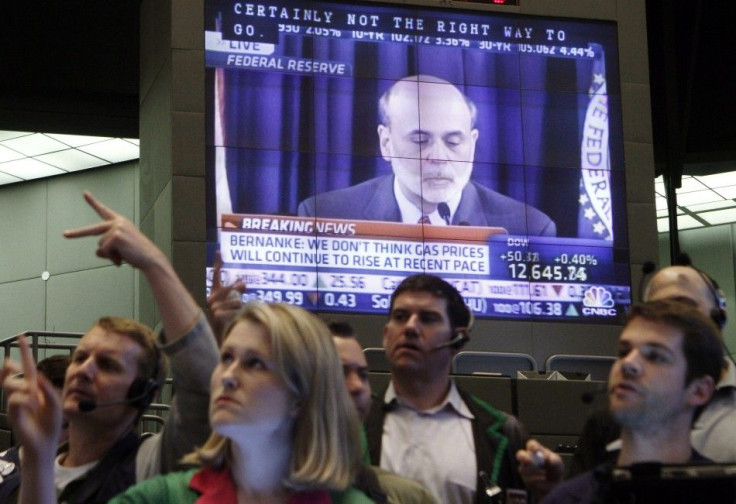FOMC Preview: Policy Changes Unlikely At March Meeting

Federal Reserve officials, at their monthly meeting Tuesday of the U.S. central bank's Federal Open Market Committee, aren't expected to announce any policy changes, economists at Bank of America Merrill Lynch say.
Members of the committee will debate whether the U.S. economy is making sufficient progress under current policy and what conditions might warrant additional monetary easing. The FOMC post-meeting statement should provide clues as to what the Fed is and isn't prepared to do.
The Fed reiterated in its January FOMC statement that current rock-bottom interest rates are likely to stay in place at least through late 2014. Six FOMC members expect the bank to increase rates before 2014, while another five expect the first hike during that year. In other words, a majority doesn't see rates remaining at the lower end of their range through the end of 2014.
Data since the January meeting has been mixed. Jobs data continued to surprise on the upside, most recently a solid payroll report for February. Fed officials are likely to repeat their assessment of two months ago of some further improvement in the labor market even as the unemployment rate remains elevated.
On the other hand, first-quarter gross domestic product -- up 1.6 percent by Bank of America Merrill Lynch's estimate -- is now tracking well below the 3 percent growth rate of the last quarter in 2011. Durable goods, consumer spending and net exports all fell below expectations.
It would be a dovish sign if Tuesday's statement downgrades January's Fed view that the economy has been expanding moderately.
However, economists don't expect more quantitative easing to be announced at Tuesday's meeting.
More QE, whether sterilized or not, is not likely before Operation Twist concludes in June, Michael S. Hanson, U.S. economist at Bank of America Merrill Lynch, said in a research note. Operation Twist is a Fed program of buying long-dated Treasurys in an attempt to push down long-term interest rates without expanding the central bank's balance sheet.
Recent media reports have spurred questions about the prospects for sterilized quantitative easing by the Fed.
Under the new approach, the central bank would first print new money to buy long-term bonds from financial institutions. This action -- standard QE -- expands the Fed's balance sheet. The Fed would then go a step further to drain those reserves by borrowing it back for short periods at low rates.
A major advantage of sterilized quantitative easing is that it doesn't expand the Fed's balance sheet and thereby reduces the risk of triggering runaway inflation by simply printing money and flooding the financial system.
Even so, Hanson pointed out that the economy is not yet weak enough to warrant more imminent easing.
A third round of quantitative easing, or QE3, by the Fed -- the first two were in 2009-2011 -- has a better chance of becoming reality in this year's second half, once growth has slowed meaningfully, Hanson added.
© Copyright IBTimes 2024. All rights reserved.






















